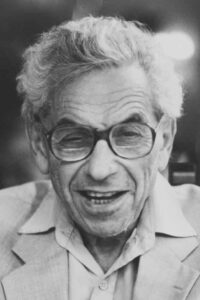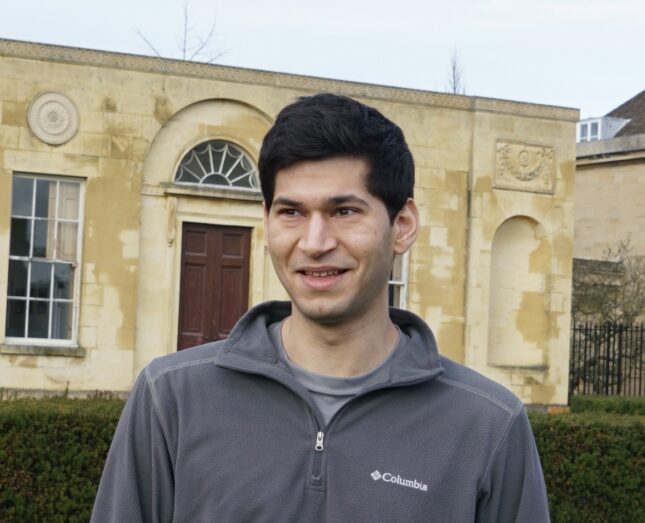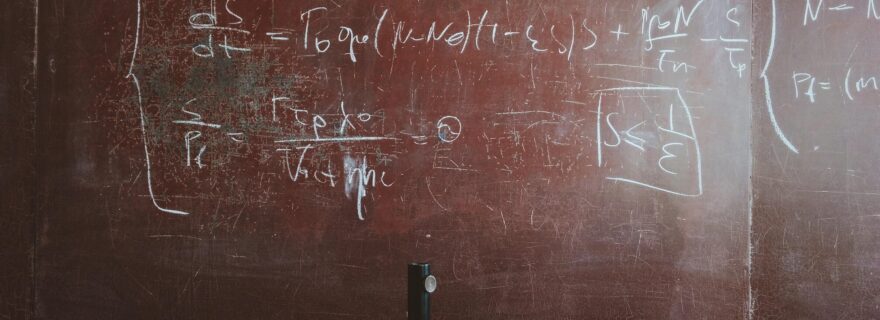A modest person, yet bold mathematician
All of doctoral student Jared Duker Lichtman’s spare time was put into proving an old mathematical problem. When he finally succeeded, it even surprised himself.
It is not often that a doctoral student takes on – and solves – a project outside its education entirely on his own. Yet it happened to 26-year-old American PhD student Jared Duker Lichtman, with his proof of a mathematical conjecture that had been unsolved for more than 30 years.
'It's every supervisor's dream,' says Frits Beukers, professor emeritus at Utrecht University, not associated with Lichtman's research. 'If you have students who do what you expect, that's nice, but this is a student who independently did something super-unique.'
Lichtman, too, remains dazed: he can still get emotional thinking back to the moment when he suddenly realized how to finish this proof. 'It was such a beautiful moment. All I could do was work on this problem,' he says with a broad smile. 'I dropped everything.'
And that "everything" is quite something: as a PhD student in mathematics at Oxford University, Lichtman has plenty to do. Yet he found time, evenings, weekends and vacations, to work on his obsession: a thirty-two-year-old problem about prime numbers.
'If you had asked me a year ago if I would prove it, I would have said no,' he says. Still, he couldn't resist working on it: 'I had long enjoyed working on such a beautiful problem. If I didn't do anything for a while, I automatically started thinking about it.'


Erdős conjectures
For four years, Lichtman tried to prove a mathematical conjecture. The problem in question was formulated in 1988 by the illustrious Hungarian mathematician Paul Erdős (1913–1996). 'Nobody had more ideas than him,' says Lichtman. The so-called "Erdős conjectures" are a household word among mathematicians: ‘They are little gems, very short and sometimes even simple statements, in which there is always an incredible depth.’
The Erdős conjecture that Lichtman turned to comes from the field of number theory, the study of integers. It deals with "primitive sets", of numbers that cannot be divided by another from the set, without producing a fraction or comma number (fractions and comma numbers do not "count" in number theory). For example, the numbers 1001 to 2000 form a primitive set because none of the numbers can divide another.
The numbers in that example, 1001 to 2000, all follow each other consecutively. Other primitive sets again consist of numbers further apart. Erdős devised a formula to calculate the "density" of a primitive set, the extent to which the numbers in such a set lie close together. That density is one number and is unique to each primitive set.
In the early 20th century, Erdős began thinking that one particular primitive set could have the greatest possible density. In 1988, he came up with his "official" conjecture: the set with maximum density is the set of prime numbers, the numbers divisible by 1 and itself.
Building blocks
Somehow the conjecture might feel logical: primitive sets contain numbers that cannot divide each other, exactly what defines prime numbers as well. Isn't it logical then that the set of prime numbers would be the largest possible primitive set? 'No, you can't just assume that no other, even larger primitive set could exist,' says Frits Beukers. 'It's wrestling with infinities.'
That didn't intimidate Lichtman, quite the contrary: 'I was totally captivated by it, so beautiful did I find the conjecture,' says Lichtman. 'I could hardly believe it could be true.'
'Prime numbers are the building blocks of all other numbers,' Lichtman explains. 'Every integer is either a prime number or a unique multiplication of prime numbers.' 14, for example, is equal to 2x7, both prime numbers. That the building blocks of the integers would appear as the largest possible primitive set is therefore tantalising.


The strategy behind Lichtman's proof was to cleverly arrange the sets of numbers in primitive sets, like words in a dictionary. Only in this way could he make the infinities of sets and their densities manageable. Erdős had his own method for making such a ranking, but it always lost some information about the primitive set, just as words can lose their value in a translation.
"In my proof, I expanded on Erdős' work and devised another method of 'translation,'" Lichtman says. With that method, Lichtman was able to perfectly link all primitive sets to their densities. Thus, he managed to distinguish prime numbers as the largest primitive set.
Beukers thinks it is a proof of the highest order: 'Prime numbers have been studied for millennia, it is not often that mathematicians can still prove such fundamental conjectures.'
No avail
In all, Lichtman worked on his proof for about four years. He discovered it after completing his undergraduate thesis, which was on a similar topic. ‘During all those years I tried to prove it in all sorts of ways, and although most of it failed, everything was interesting in its own right,’ he says. Some of those side paths led to their own investigations, which Lichtman is now pursuing.
Lichtman kept his work on the conjecture largely to himself – after all, he had no way of knowing whether he would find any evidence at all, and in the meantime had to make weekly progress of his PhD research to his supervisor. 'I felt guilty that I was occasionally working on my hobby project instead of my dissertation.'
Moreover, other big names had preceded Lichtman in trying to solve the conjecture – to no avail. 'This was not the first time he tackled a problem that others could not solve without hesitation,' says Carl Pomerance, a number theorist who recognized Lichtman's talent at an early age, and began mentoring him informally. 'Jared is a humble person, but a bold mathematician.'






0 Comments
Add a comment